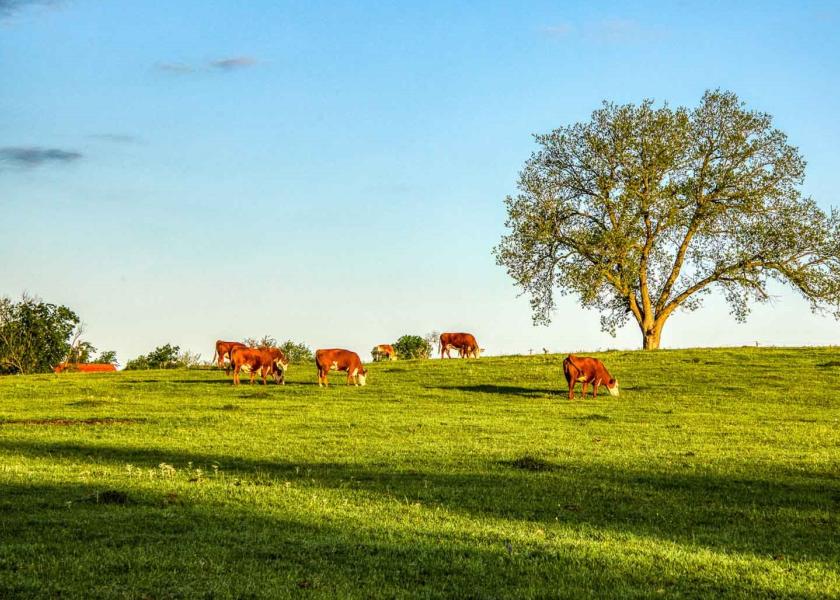Sexten: Rebuilding Through Technology

The historic rise in calf, feeder and finished cattle prices over the last few months provided a much-needed spark of optimism in the cattle industry. With widespread moisture falling across many of the most severe drought-stricken areas as of this writing, green pastures will certainly fan this spark. With the rising value of grain and falling cost of gain, it’s hard not to be excited for the future.
Times of profitability provide excellent opportunities to reflect on what decisions we made to get here, more specifically what management practices resulted in the improving balance sheet. A short-term look from an industry perspective suggests little, if any, aspects of the recent financial improvements can be attributed to ranch or lot-level management decisions. Cattle prices are responding to macro-level supply and demand fundamentals. The financial improvement we are experiencing is largely attributed to short supply and the fundamental truth beef tastes better than the alternative proteins.
Don’t get me wrong, being able to capitalize on the current market conditions required diligent management for well over 2 years to go from breeding season to finished steer. Keeping inventory on hand has been a challenging decision for every segment in the face of drought and historically high input costs.
Inventory management or stocking rate doesn’t get much press, but it may be one of the most critical management decisions made when you consider profit or loss across the operation. Inventory directly impacts fixed cost dilution while serving as the multiplier for total operational income.
The current beef cow inventory is just under 29 million head, setting a baseline beef production level that will be hard to change in the short term. Few consumers realize how long rebuilding takes - bulls turned out this summer are the beginning of the boxed beef production for the fall of 2025.
This delayed impact on beef production serves as a good reminder of just how far away we are from increased supply. The current approach to increasing inventory is focused on the replacement female and indirectly cow culling rates. For most commercial cowherds, the replacement female represents the most significant inventory decision. Keeping a heifer is a direct reduction in current income while adding development costs. Deciding how many and which heifers to keep are the two most impactful decisions after what bulls to turn out.
Back to the income side for a minute, higher average prices are good for everyone, however, a review of market reports shows a considerable range around these higher averages.
If we think about short-term opportunities to increase inventory one doesn’t have to consider increasing headcounts alone. One alternative to adding headcount is decreasing losses - same outcome different approach. At the ranch, there are several paths to reducing pre-weaning losses: eliminating calving difficulty, ensuring calves get colostrum and preventing death losses.
Management to reduce pre-weaning death loss is where vaccine programs around branding or turnout offer the advantage of reduced losses to preventable disease while driving additional revenue in price per pound for these value-added practices (VAC). Sale price reports from 2022 Superior Livestock Auctions[2] and the Oklahoma Beef Quality Network[3] suggest market premiums between $8 and $18/cwt are available for preconditioning programs. We often consider VAC programs as most beneficial to the next owner, however, increased weight associated with improved health while marketed at a premium price is a benefit recognized at the ranch gate.
Perhaps the most interesting opportunity cited in the 2022 Superior Livestock Auction data was the lack of premiums associated with not implanting calves. Why is lack of premiums an interesting opportunity?
Using growth-promoting implants in nursing calves according to label directions offers about 0.1 lb/day additional weight gain compared to non-implanted steers[4]. Historically, non-implant-using producers would ensure the auctioneer announced the absence of implants when marketing calves. The auctioneer was effectively communicating the opportunity for compensatory gain to the next owner, while assuming a market premium was paid. Rather than premiums for non-implanting, consider the absence of discounts associated with using implant technology to increase ranch-level beef production.
Using vaccines, de-wormers and implant technologies to increase production will not solve the long-term beef supply issues, however, once the US cowherd is re-stocked, one would expect prices to retreat. To capitalize on these historic pricing opportunities in the near term, consider implementing technologies to increase beef production without adding the risk of additional inventory.
[1]USDA AMS Livestock, Poultry & Grain Market News; MO Dept of Ag Market News. Missouri Weekly Cattle Auction Summary. Accessed 5/16/2023. Link: chrome-extension://efaidnbmnnnibpcajpcglclefindmkaj/https://www.ams.usda.gov/mnreports/ams_1821.pdf
[2]Beck, Paul. Drovers.com. Factors Affecting Calf Prices in 2021-2022 from Superior Livestock Auction Data. Accessed 4/24/2023. Link: https://www.drovers.com/news/beef-production/factors-affecting-calf-prices-2021-2022-superior-livestock-auction-data
[3]Peel, Derrell. Oklahoma State University Extension. Cattle and Beef Market Indicators All Green. Accessed 3/6/2023. Link: https://extension.okstate.edu/programs/beef-extension/cow-calf-corner-the-newsletter-archives/2023/march-6-2023.html
[4]Beck, Paul. Drovers.com. Implanting Preweaning Calves: A Cost-Effective Way to Increase Production. Accessed 4/18/2023. Link: https://www.drovers.com/news/beef-production/implanting-preweaning-calves-cost-effective-way-increase-production







